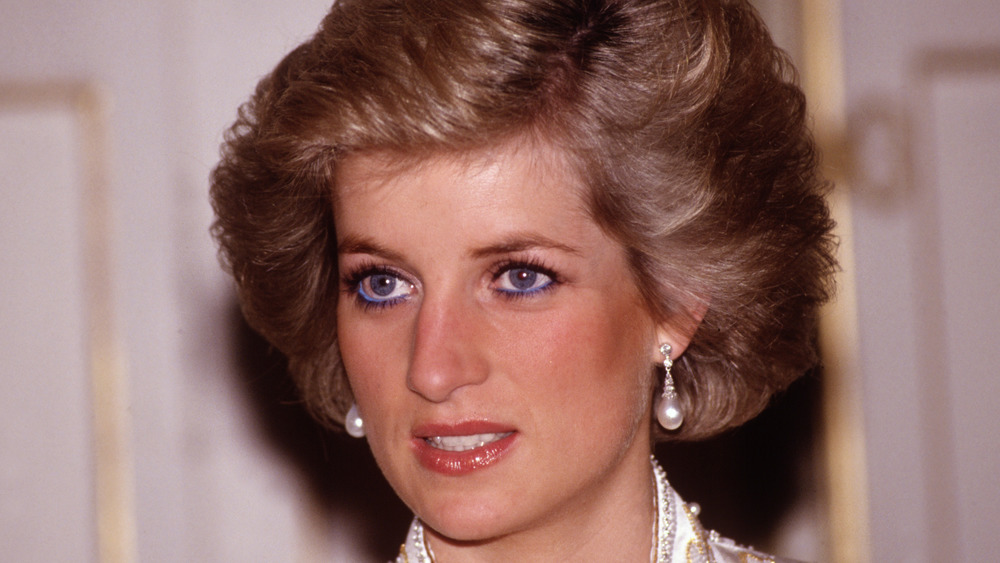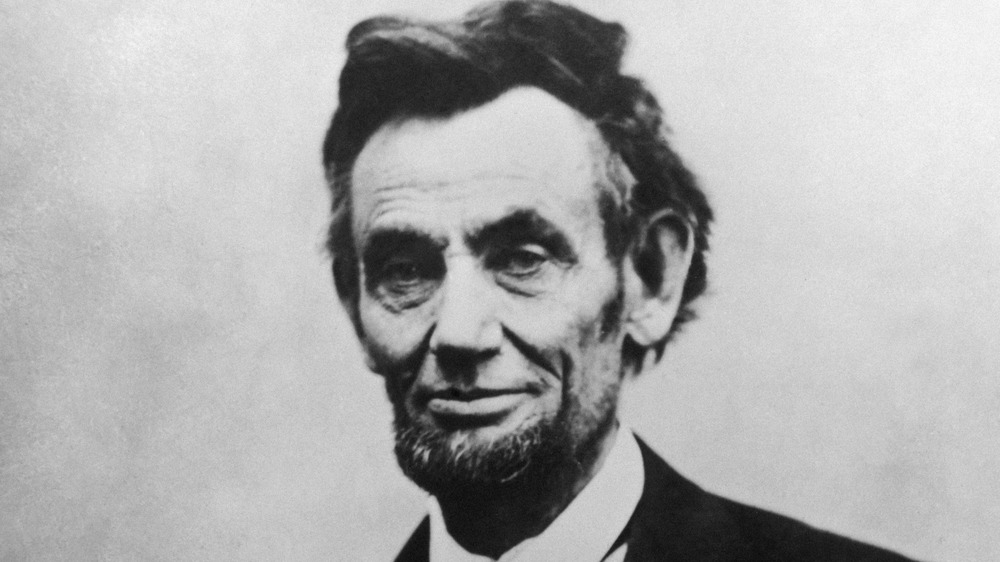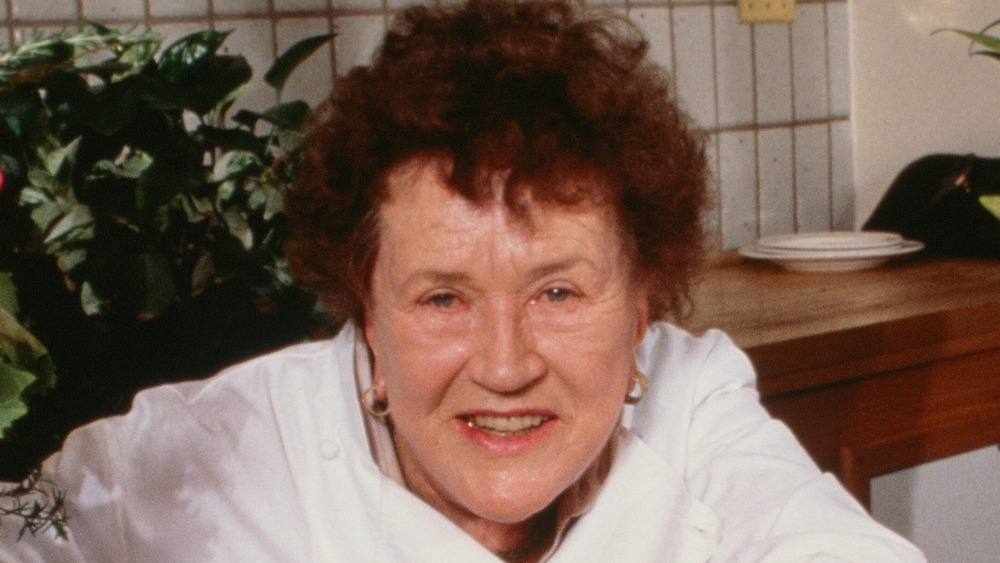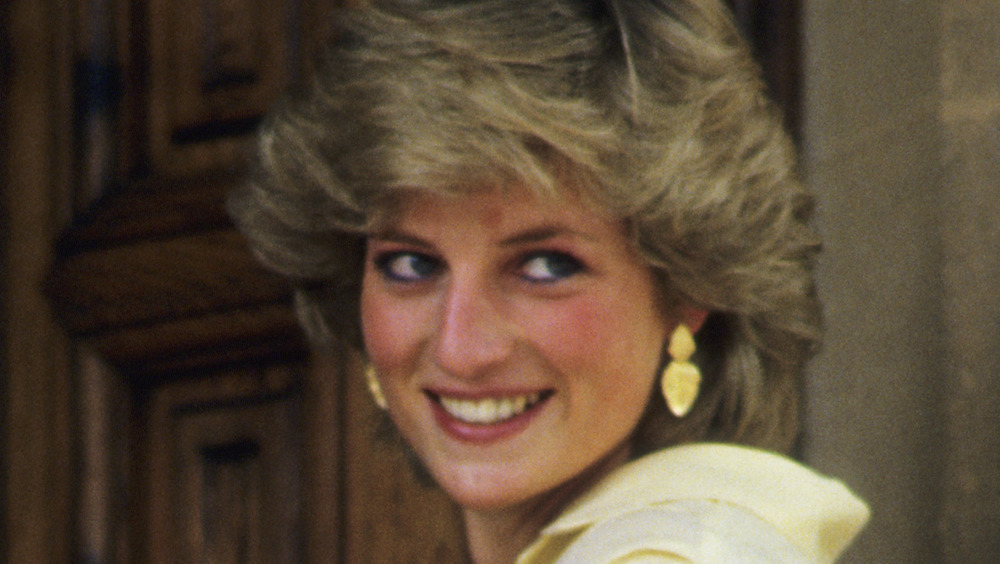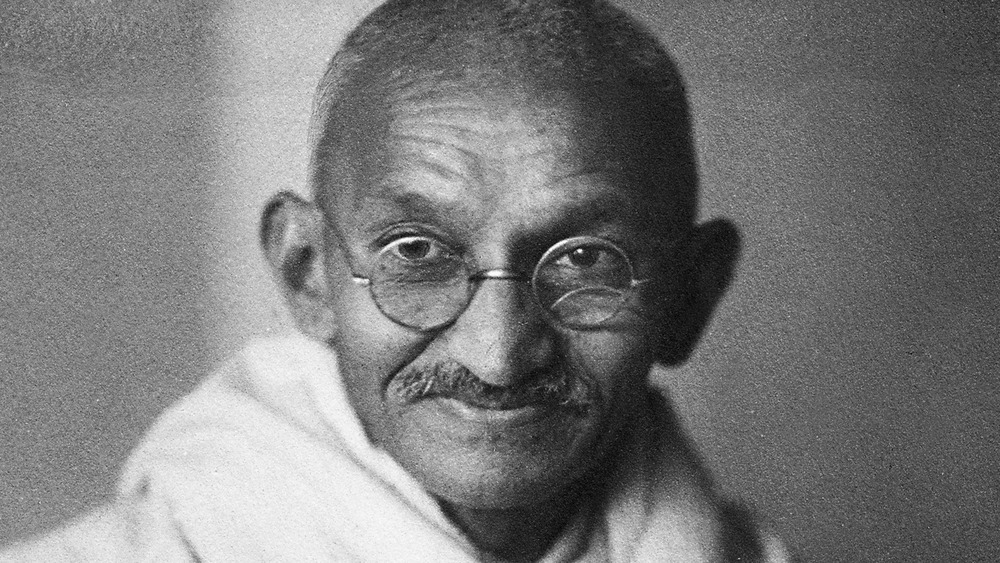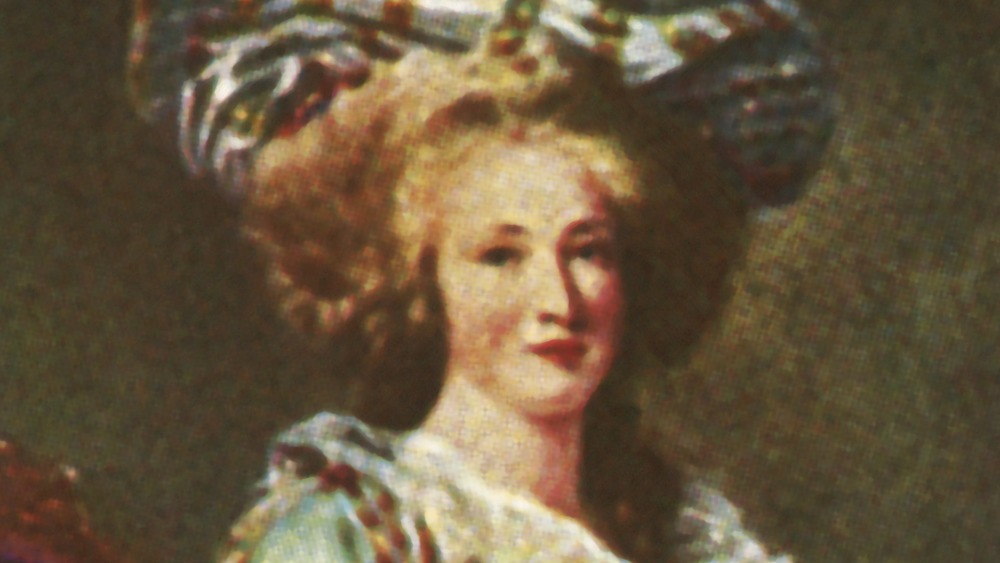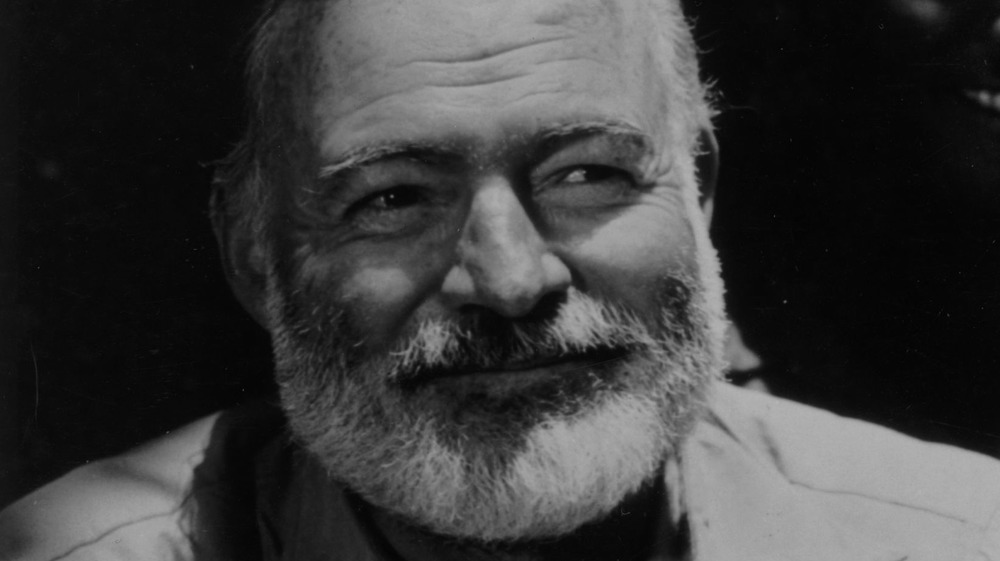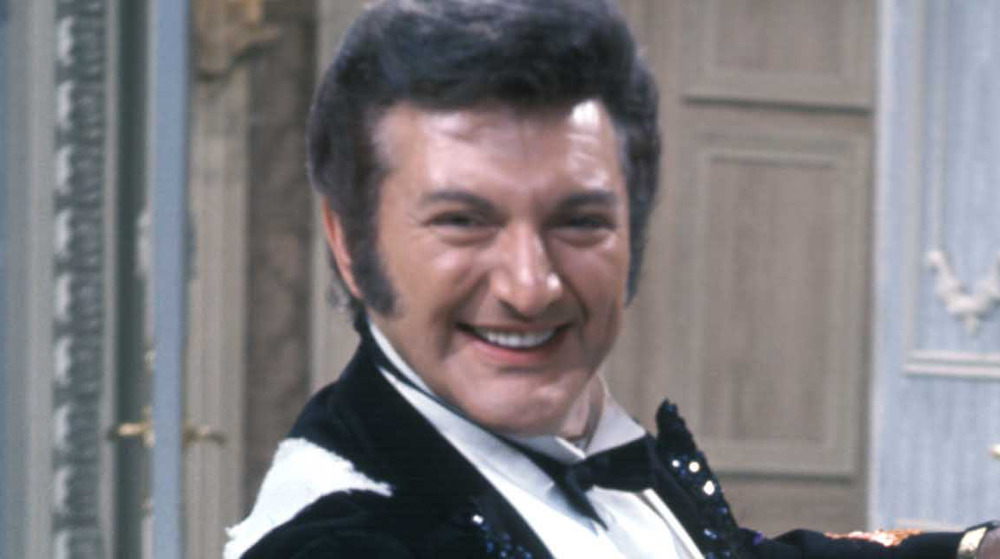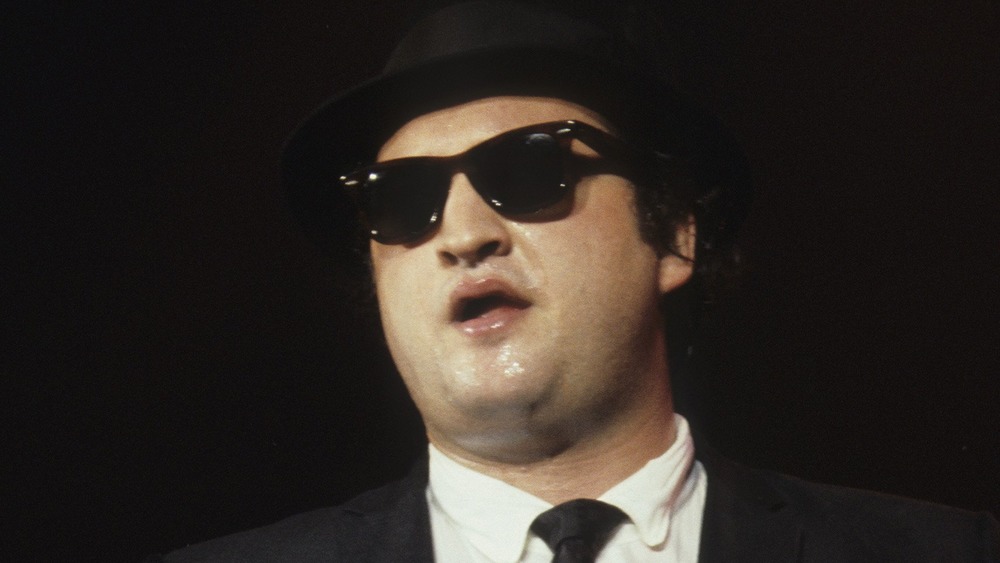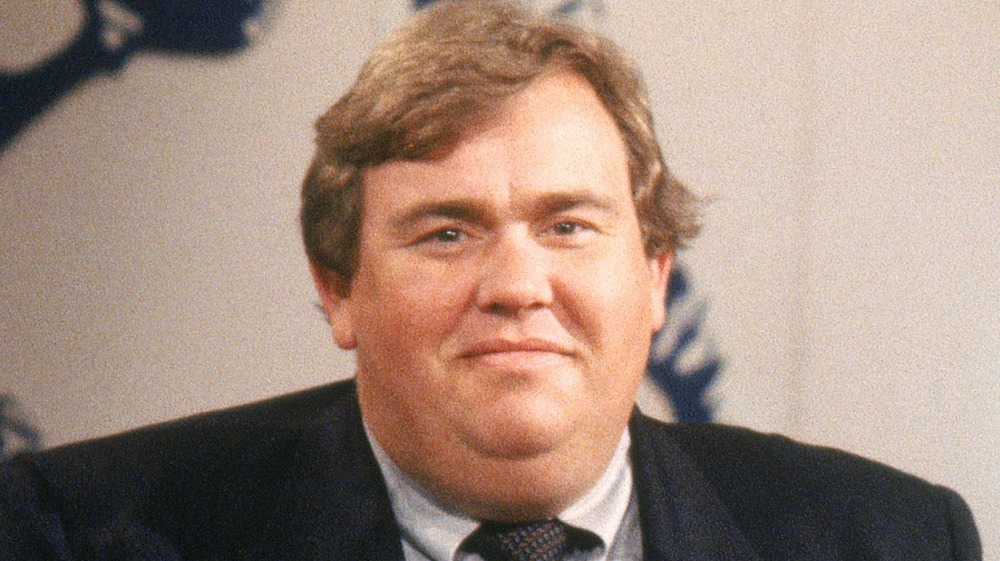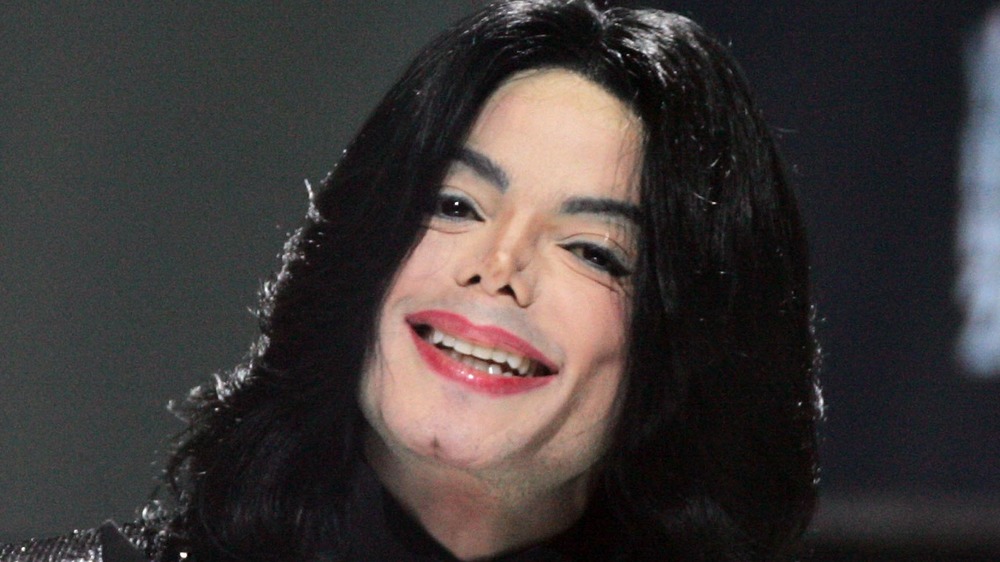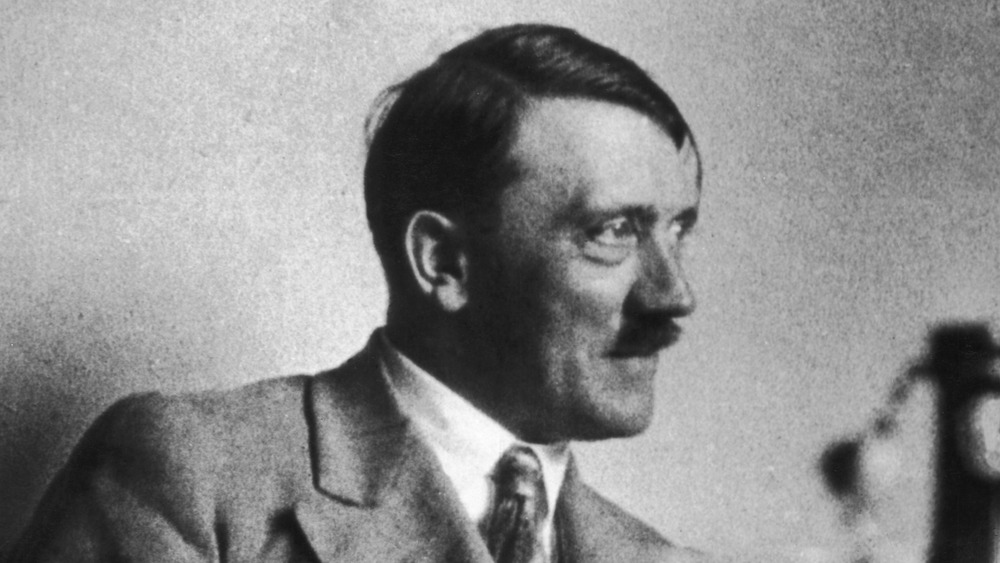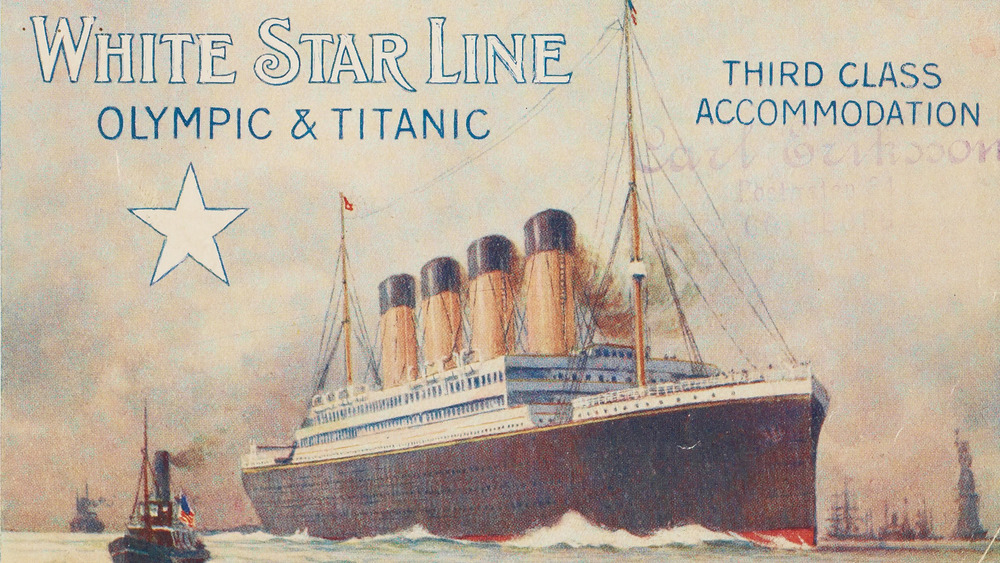The Last Meals Of These Famous Figures
Food is vitally important to the human experience. It fuels the body, its preparation is an art, eating it is a social and communal experience — consuming food is arguably what makes us human. Sure, food is a part of day-to-day life, but it's also used to celebrate monumental moments in our lives and in the lives of others. That includes final moments. Much has been said about last meals, like the importance of what one would choose to dine on before shedding that mortal coil (which requires that food in the first place). When deciding what one's last meal would be, it's really choosing a favorite meal or the most iconic or important meal of their life.
The notion of a last meal humanizes famous people and historical figures — even those larger than life appreciate food, too. Knowing what legends ate before they died — whether they were consciously aware of their impending demise or not — is a fascinating and intimate look into what were quiet, contemplative, joyful, and terrifying moments. Here is what was on the menu on the last day on earth for some very important people.
Abraham Lincoln had a big meal before an evening at the theater
A man from Illinois with a working class background, Abraham Lincoln wasn't an aristocrat, and despite his status as the president of the United States and the benefits therein, he wasn't a fan of fancy foods. Lincoln's White House private secretary John Hay, according to The History Channel, claimed that the president's usual breakfast consisted of a cup of coffee and an egg, while dinner would be a light affair of "one or two courses," something like corned beef and cabbage or chicken fricassee with biscuits and gravy.
Lincoln's last night on earth was April 14, 1865 — Good Friday, just before Easter. At about 7 p.m. that evening, he dined with friends, including Illinois Gov. Richard Oglesby. They feasted on a holiday-worthy spread far removed from Lincoln's usually simple diet. Reports say that Lincoln sat at a table loaded with mock turtle soup, chicken-like roast Virginia fowl (with chestnut stuffing), baked yams, and cauliflower with cheese sauce. After the meal, Lincoln and his wife, Mary Todd Lincoln, headed to Washington, D.C.'s Ford's Theatre, where he saw most of the comic play Our American Cousin, interrupted when actor and Confederate sympathizer John Wilkes Booth assassinated the Civil War-era president.
A French treat for The French Chef
Before Julia Child, there was no such thing as "foodies." There were gourmets, a small circle of chefs and privileged who asserted that there was no finer canon of food than French food. Child, an American, brought French food to the masses and virtually invented modern-day food-based entertainment. With collaborators Simone Beck and Louisette Bertholle in 1961, she published the perennial bestseller Mastering the Art of French Cooking, which showed everyday home cooks how to cook really good food really well. Two years later, she starred on The French Chef on public television, one of the first educational cooking shows.
According to the Los Angeles Times, Child stayed healthy and spry into her early 90s, dining out and hitting southern California farmers markets up until the summer of 2004. At that point in time, the 91-year-old food pioneer began to experience kidney failure, which would lead to her death that August. The evening before she died in her sleep, Child ate a dish prepared by her assistant, Stephanie Hersh. The meal was French onion soup — a classic and emblematic selection of the French food to which Child spent her adult life celebrating.
Fish and eggs for the People's Princess
In the summer of 1997, according to USA Today, Princess Diana, recently divorced, internationally beloved human rights crusader, and thoroughly photographed "People's Princess" of the United Kingdom, started a new relationship with Dodi Fayed, son of wealthy businessman Mohamed al-Fayed. Things got serious quickly, and on the evening of Aug. 30, 1997, Fayed planned to propose to Diana. The pair had a reservation to dine at the Benoit Paris, a Michelin-starred restaurant specializing in classic French food.
According to The Day Diana Died (via USA Today), by Christopher Andersen, the eatery was already swarming with tipped-off paparazzi, so Diana and Fayed instead went to L'Espadon, a restaurant inside Paris's Ritz Hotel, an establishment owned by Fayed's father. Around 10 p.m., Diana ordered a selection of items — Dover sole, vegetable tempura, and an omelet with mushroom and asparagus. Fayed then grew concerned that some of the restaurant's other diners might actually be surreptitious photographers and had waitstaff send the meal up to their room. Shortly after midnight, the couple left the hotel and subsequently died when their chauffeur-driven Mercedes crashed into a pillar in the Pont de l'Alma tunnel in a high-speed chase against paparazzi.
Mahatma Gandhi ate healthy until the very end
Historically, Mahatma Gandhi is more associated with the conscious, defiant act of not eating than he is with food. As the face and leader of the Indian independence movement that aimed to drive the ruling U.K. out of the Asian subcontinent in the early 20th century, Gandhi was thrown in jail for his protests and other activities. According to The History Channel, Gandhi, while imprisoned at Yerwada Jail in Pune, India, started a hunger strike in 1932 to protest the ruling English government's plan to stratify India's voting system by caste, or social class.
Gandhi continued to utilize hunger strikes as a form of civil disobedience throughout his life and after India gained self-rule in 1947, including one in January 1948, just weeks before he died, protesting the lack of peace negotiations in New Delhi between Hindu and Muslim sects. On January 30, two weeks after he stopped fasting, Gandhi was assassinated while en route to a prayer meeting.
Before he died, according to The Hindu, he ate a routine meal in plan with his usual healthy and vegetarian diet. Gandhi ate a bowl of cooked mixed vegetables, four whole tomatoes, four oranges, a serving of goat milk, some carrot juice, and a concoction consisting of aloe and lime juice spiced with ginger.
They let Marie Antoinette eat soup
Marie Antoinette, the last queen of France, is strongly and historically associated with two foods. Born and raised in Austria before she married into the French royal family, Marie Antoinette reportedly introduced a baked good from her nation, the croissant, to France, which took it on as its own. And then there's the quote, "Let them eat cake," an apocryphal and naive if not cruel saying attributed to the queen, which she supposedly but ultimately didn't utter in response to reports that in the run-up to the French Revolution, the impoverished people were starving from a lack of bread.
When the masses did rise up and overthrow the royal family, of which Marie Antoinette was a part, they blamed her and her perceived cruelty for France's many social and economic problems. According to The History Channel, the ex-queen had to stand before a tribunal, which convicted her of treason and sentenced her to death by guillotine in 1793 at age 37. Per Victoria R. Rumble's Soup Through the Ages, Marie Antoinette was so despondent in her final days on earth, both before and after her trial and sentencing, that she consumed little more than chicken bouillon. Urged by a prison attendant to eat something before her execution, she could only stomach a few spoonfuls.
Ernest Hemingway's last meal was a steakhouse special
Ernest Hemingway is one of the definitive "great American novelists," with works like The Sun Also Rises landing on lists such as the American Library Association's most-loved novels. A towering figure of literature, Hemingway was also the textbook definition of manliness. With his thick beard, stern gaze, and books about war and fishing written in simple, firm, and direct language, he's a cultural touchstone of "macho." He also famously (according to HuffPost) laid out the rules for manhood, which involved planting a tree, fighting a bull, fathering a son, and writing a book.
In other words, Hemingway had a brand, and he stuck to it until the very end of his life. Per James L. Dickerson's Last Suppers, after treatments for depression at the Mayo Clinic in Minnesota in June 1961, Hemingway returned to his home in Ketchum, Idaho. The day after he arrived, he and his wife, Mary, dined at The Christiania. According to server June Mallea, Hemingway ate a manly, straightforward, steakhouse-style meal of a New York strip steak, baked potato, Caesar salad, and Bordeaux wine. The next morning, Hemingway committed suicide with his shotgun (according to the The New York Times), aged 61.
If you or anyone you know is having suicidal thoughts, please call the National Suicide Prevention Lifeline at 1-800-273-TALK (8255).
Liberace fancied some hot cereal
A classical pianist with a pop sensibility and an understanding of how to engage concertgoers and early television viewers, Liberace was one of the most famous people in the world in the 1950s and 60s. Liberace was all about the lavish — his giddy and ostentatious displays of wealth were part of his persona and image, such as his many jewel-studded outfits. That extended to food — he once published a cookbook purporting to include recipes developed in the "seven dining rooms" of his palatial properties.
But when the end was near, for Liberace, his tastes veered toward the simple, easy, and comforting. In January 1987, Liberace was in Palm Springs, Calif., dying from complications of AIDS (although that was not yet public knowledge). He called his personal cook and companion of 40 years, Gladys Luckie, to join him — she was still living in Las Vegas, where Liberace had spent many years in a concert residency. "He always said I was the only one who made Cream of Wheat the way he liked it — with sugar and lots of butter," Luckie told the Las Vegas Sun. "That last day I made him Cream of Wheat. He gave me a smile and a wink," she said. "And that was the last thing." Soon after, Liberace died at age 67, per the The New York Times.
John Belushi partied hard with lentil soup
John Belushi was the wild man of comedy in the 1970s and early 1980s. For what would turn out to be a very brief tenure as the biggest name in the funny business, Belushi became a star as part of the first cast of Saturday Night Live, delighting viewers with his madcap characters like a samurai working modern-day jobs, a singing bee, and savage impersonations of Elizabeth Taylor and Joe Cocker. After that, it was on to movies like Animal House, 1941, and The Blues Brothers.
Off-screen, Belushi was a major party animal. Cathy Evelyn Smith, his drug dealer, told the National Enquirer that Belushi spent $8,000 on cocaine in the week before his death. On March 5, 1982, per the Los Angeles Times, the body of the 33-year-old comedian was found in a bungalow at the Chateau Marmont hotel in West Hollywood.
After Smith was indicted on a murder charge, details of Belushi's last night emerged during grand jury testimony. SNL writer Nelson Lyon said he witnessed Smith inject Belushi with cocaine several times and later gave him a "speedball," a powerful mixture of heroin and cocaine. According to Vice, an autopsy revealed that the only thing in Belushi's stomach that wasn't a drug at the time of his death was lentil soup, which he'd consumed during a stop at The Rainbow, a nightclub on Los Angeles' Sunset Strip.
John Candy made dinner for his employees
After breaking through as a cast member of SCTV in the late 1970s, Canadian actor John Candy churned out one classic comedy after another in the 1980s and early 1990s. The scene-stealer gave memorable, hilarious performances in Stripes, Splash, Brewster's Millions, Spaceballs, and Cool Runnings. He also closely collaborated with prolific filmmaker John Hughes, who cast Candy in National Lampoon's Vacation, The Great Outdoors, Uncle Buck, Home Alone, and Planes, Trains and Automobiles.
On March 4, 1994, according to People, Candy wrapped shooting on the Western comedy Wagons East, outside of Durango, Mexico. The actor was deeply pleased with his performance, feeling that he'd just given the best acting work of his life. He celebrated with a wrap party for his assistants and support staff, personally cooking the group a spaghetti dinner. After the dinner wound down, Candy made some phone calls to co-stars Richard Lewis and Robert Picardo and then to his kids back home in California (according to The Hollywood Reporter) and went to bed. Candy died in his sleep at the age of 43.
Michael Jackson ate ahi before he beat it
Michael Jackson declared himself the "King of Pop," but he could back it up. In the 1980s, he was massively successful — his 1982 album Thriller sold 66 million copies (per Guinness), and follow-up Bad sold another 35 million (per The Guardian). Singles —and the accompanying high-budget, cinematic music videos — for "Beat It," "Billie Jean," "Bad," and "Thriller," were inescapable. In the 90s and 2000s, Jackson's star faded after he faced multiple, troubling allegations of abuse against minors.
When Jackson died in June 2009, he was in the midst of a comeback attempt, preparing for a blockbuster 50-date concert residency in London, according to Fortune. According to an Associated Press interview (via Fox News) with Jackson's private chef, Kai Chase, the King of Pop generally ate the same things each day for breakfast, lunch, and dinner — granola with almond milk for breakfast, a chicken and spinach salad, and seared ahi tuna, respectively. Chase had a sense Jackson was not well when on the morning of June 25, 2009, the star's doctor, Conrad Murray, didn't come to the kitchen to get the granola. Jackson, 50, had died.
Hitler dined on bunker pasta
Allied troops entered and took over the German capital of Berlin at the end of April 1945, meaning the end of World War II was inevitable and near, particularly for Adolf Hitler's Nazi Party and its all-consuming urges to conquer Europe and exterminate the Jewish race. As a coalition of his opponents entered Berlin, Hitler hid out in an underground bunker with some close associates, including his new wife Eva Braun and his personal chef, Constanze Manziarly.
In 2017, newly discovered letters (via the New York Post) from Manziarly to her sister provided a first-hand account of the Nazi leader's final moments and final meal more than 70 years earlier. The chef got to work, preparing a first course for Hitler, a simple dish of pasta and vegetarian tomato sauce. She returned to the kitchen to prepare the next item, fried eggs and mashed potatoes. Hitler never touched those things — after he ate the pasta, per The History Channel, he consumed a deadly cyanide capsule.
This was the lavish final meal served on the Titanic
The RMS Titanic was the most famous ocean liner in the world, both before it set sail on its maiden voyage from Ireland in 1912 and after it tragically sunk in the icy waters of the Atlantic Ocean a few days later. More than 1,400 people died after the Titanic, heralded as unsinkable and indestructible, plunged into the ocean after striking an iceberg around 11 p.m. on April 14, 1912, according to the Smithsonian.
Top-notch accommodations on the Titanic were exclusive and expensive, and several prominent barons of industry, big names, and various powerful and wealthy people were on board the ship, among them (per Anglotopia) real estate magnate John Jacob Astor IV, mining tycoon Benjamin Guggenheim, and Macy's founder Isidor Straus.
According to Delish, Titanic Executive Chef Pierre Rousseau prepared a rich, extravagant, and expansive ten-course meal for the liner's first-class clientele. After starting off with hors d'oeuvres, oysters, and soup (cream of barley or a consommé), elite diners moved on to poached salmon, then a choice of filet mignons or chicken sauté, followed by lamb with mint sauce (or beef sirloin or roast duckling) with peas, carrots, rice, and potatoes. After a palate cleanser of Punch Romaine (a rum and shaved ice cocktail), they then tucked into roast squab, a cold asparagus vinaigrette, foie gras, and, finally, dessert. They could pick from eclairs, ice cream, a jelly, or Waldorf Pudding, an eggy, fruity custard.
